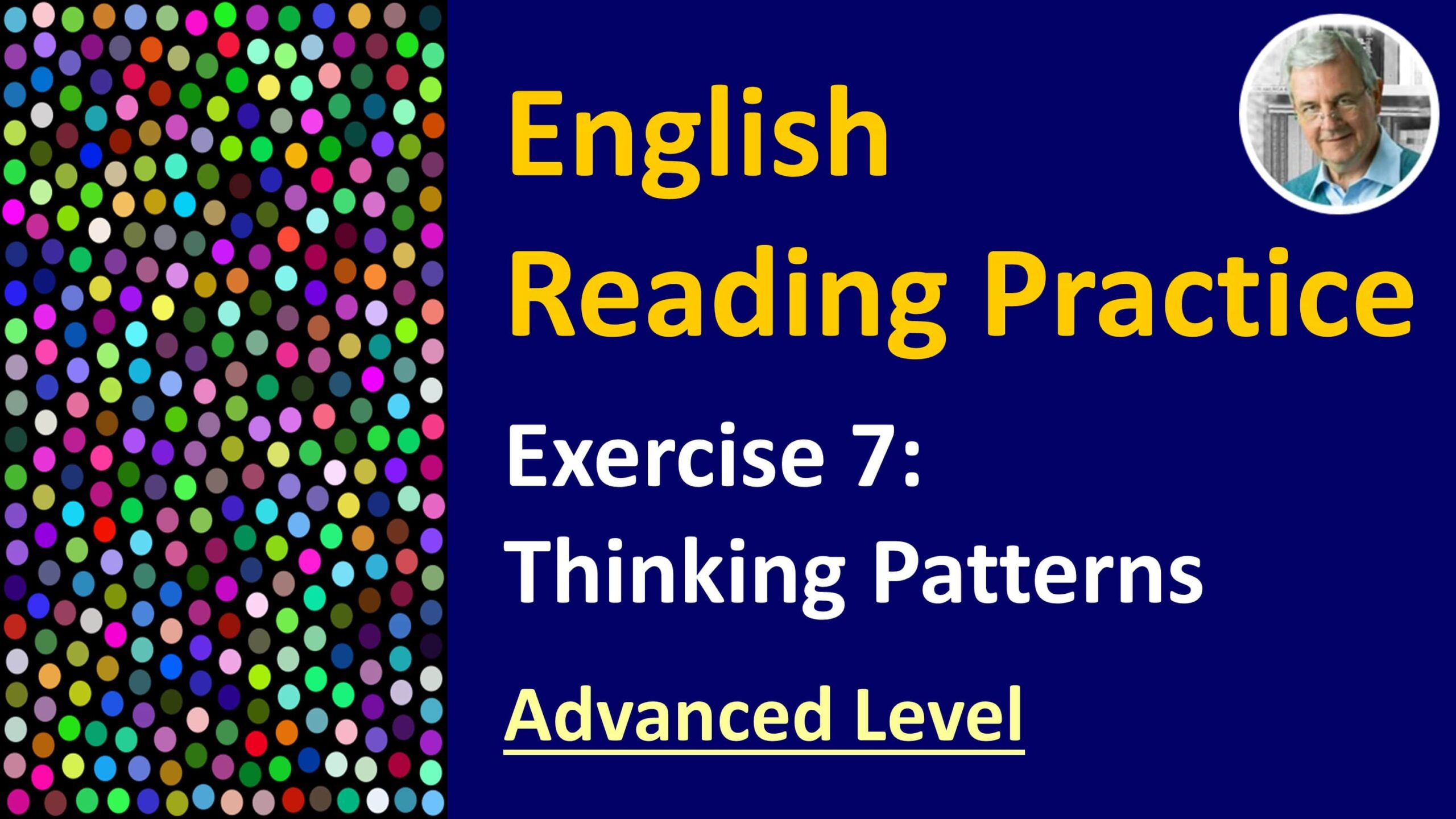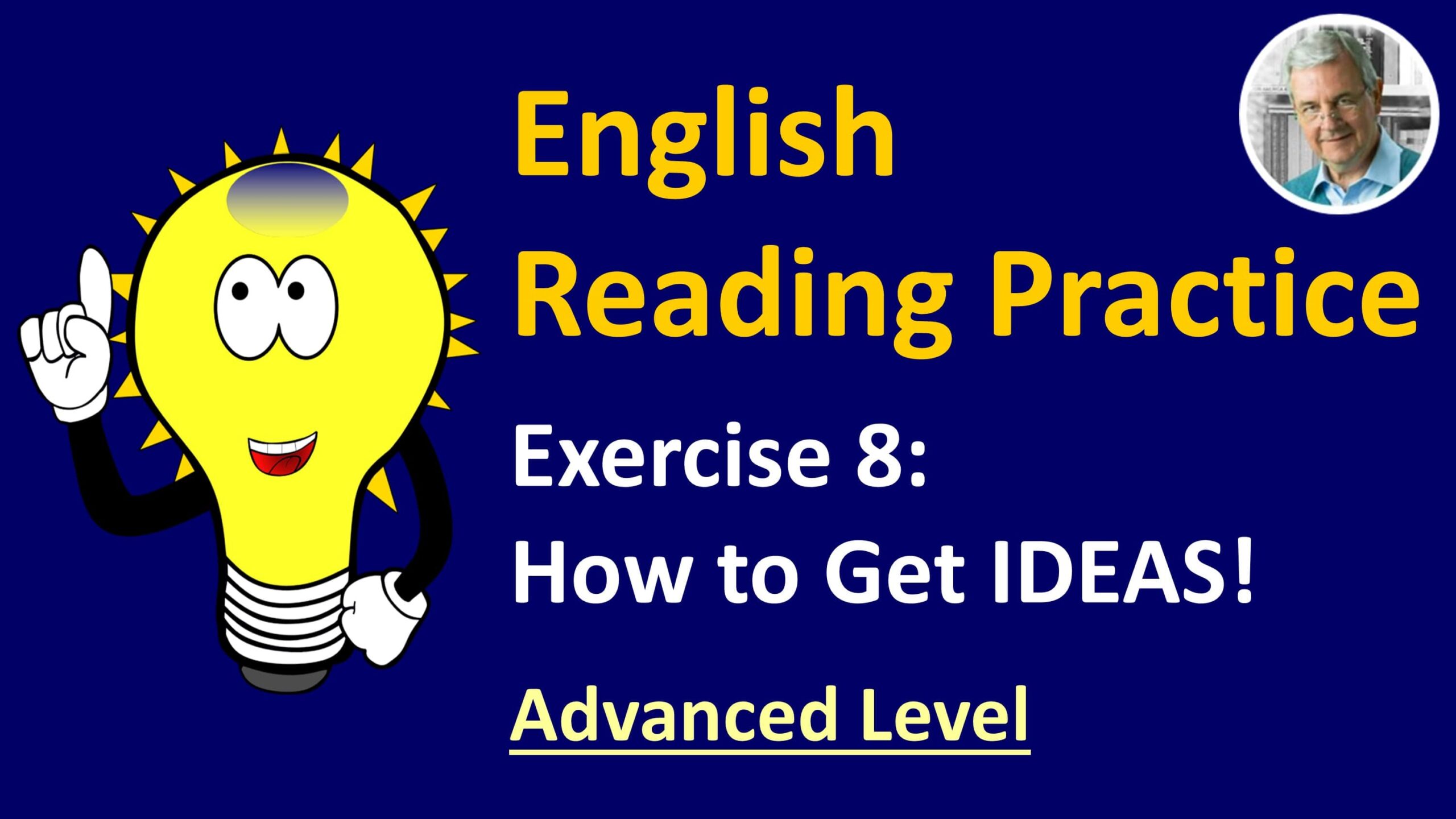ENGLISH Reading Exercise #7 (Intermediate): Thinking Patterns
ENGLISH Reading Exercise #7 (Intermediate): Thinking Patterns
This exercise has been created for English students who are at a beginner to intermediate level. The pace of the reading is slower, with emphasis on pronouncing all the syllables.
During this English reading practice session, you will read along with the teacher at the same time, with the teacher’s voice superimposed over their own, students start to self-correct in the areas of pronunciation and fluency, learning to read and speak in natural word groups.
After a student feels comfortable at this pace, they can do the exercise created for intermediate to advanced students, which is faster and sounds normal for a native speaker.
English reading practice will certainly help you speak English fluently or at least great improve your English fluency.
Here is the transcript for “English Reading Practice Exercise 7 (Intermediate)”
Be sure to watch the introductory video to this playlist before doing this exercise.
Click on the link below in the Description . . .
(https://youtu.be/IOeaBha6dUU)
Instructions
- Turn up the volume so the teacher’s voice is loud.
- Read the words in red out loud at the same time as the teacher.
- Pay attention to the teacher’s voice intonation and the word groups.
- If you find the speed is too slow, go to the playlist and choose the advanced version.
The text:
Thinking Patterns
In recent decades much has been learned about the human brain through scientific research. About 100 billion nerve cells called neurons are packed into the brain. They do not touch each other but are separated by tiny spaces less than one millionth of an inch across, called synapses. Experiments suggest that when we learn, connections are formed and pathways are created.
Continued use strengthens the connections and learning is reinforced. In his book, The Mechanism of Mind, author Edward De Bono uses a very helpful illustration to show how connections are reinforced through use. Imagine a fruit jelly in a mold. Take a teaspoon of boiling water and pour it over the surface of the jelly. What happens? The boiling water will make channels in the surface of the jelly.
Now take a second teaspoon of boiling water and pour it over the surface of the jelly. What happens this time? Some water will create new channels, but a proportion of the boiling water will run into existing channels formed from the first teaspoon. These channels become deeper. Do this a third time, and again, some new channels are formed, but a large proportion of the boiling water will automatically flow into existing channels, making them even deeper.
This information is useful when learning English. As new vocabulary is learned, it is important to associate new words with words you already know, registering them as synonyms or antonyms. Some words have the same pronunciation and spelling but many meanings. For example, the word DATE. Date can refer to a day of the month on a calendar. It can also refer to a romantic meeting between a man and woman. The man or woman can also be referred to as a date. The word can be used as a verb, as in, “She has just started dating.” Finally, the noun date can refer to the fruit of the date palm.
On the other hand, there are words with the same pronunciation, but with different spelling and totally different meaning. For example, sow and sew. “The farmer sowed seed in the field.” “His mother sewed his torn jacket.”
By reviewing the various meanings of this word, strong connections can be formed in the brain and it is unlikely you will forget this word in the future. So utilize the amazing characteristics of the human brain in forming patterns and associations which are strengthened through repetition. Surround yourself with English reading material, recordings, videos and movies and see a major improvement in your vocabulary and fluency.
That is the end of the reading.
Repeat this exercise many times until you can synchronize your reading with the teacher.
Practice other exercises in this playlist and see a major improvement in your English speaking fluency.
Has this video helped you? Hit LIKE now!
Continually IMPROVE YOUR ENGLISH by subscribing to this channel.
Hit the subscribe button NOW!
Click the bell icon and choose All to be notified when there are new videos!
Build A Powerful English Vocabulary with my FREE course on Udemy.
Go to: http://goodenglish.online
If you found this English Practice Reading Exercise helpful, be sure to check Exercise 6 (Intermediate) which provides helpful information on enthusiasm:
ENGLISH Reading Exercise #6 (Intermediate): Enthusiasm


